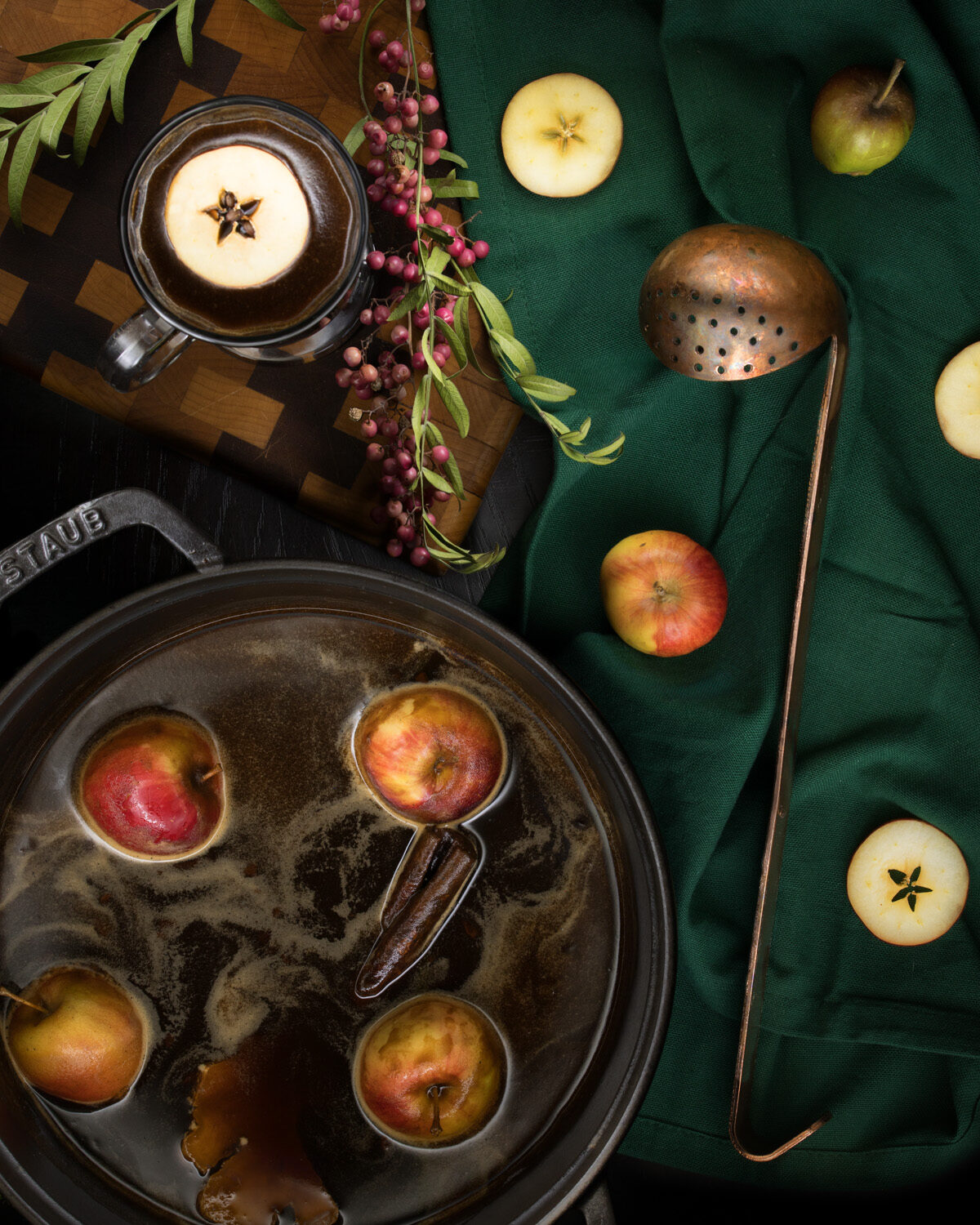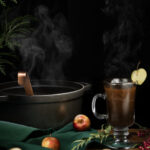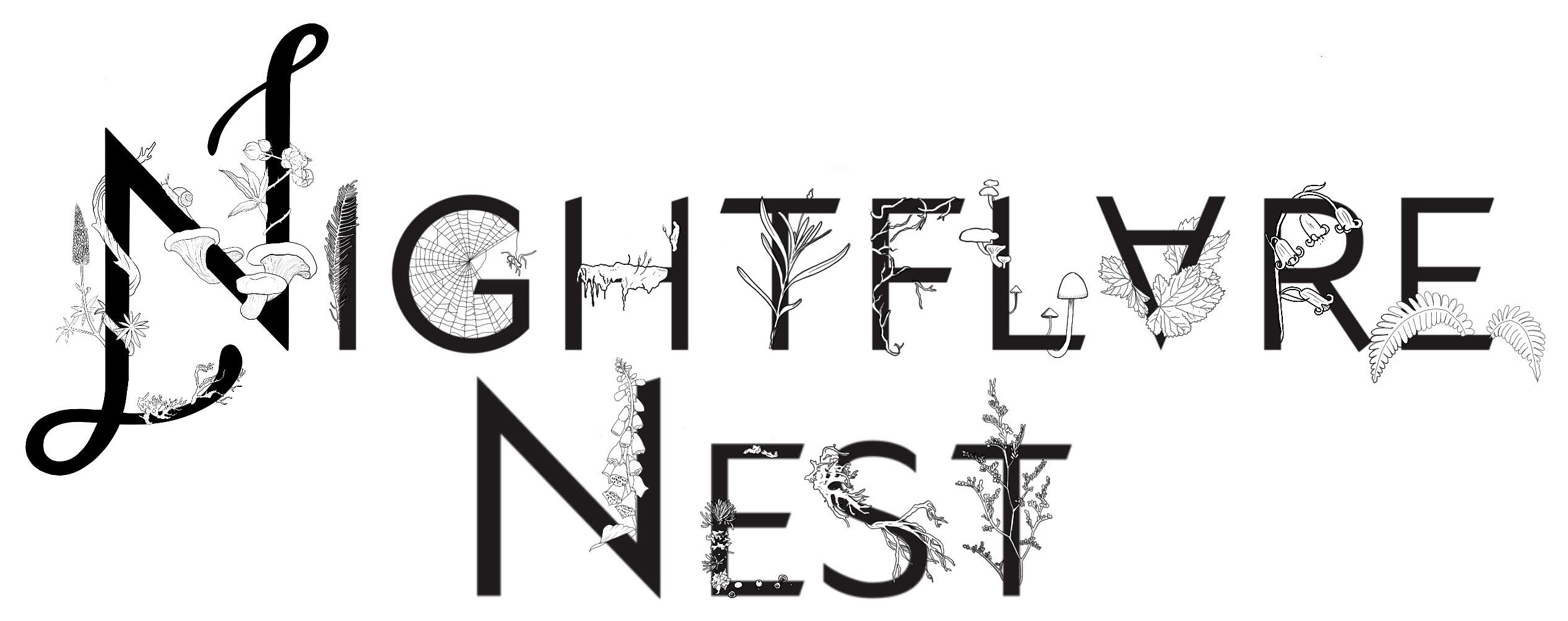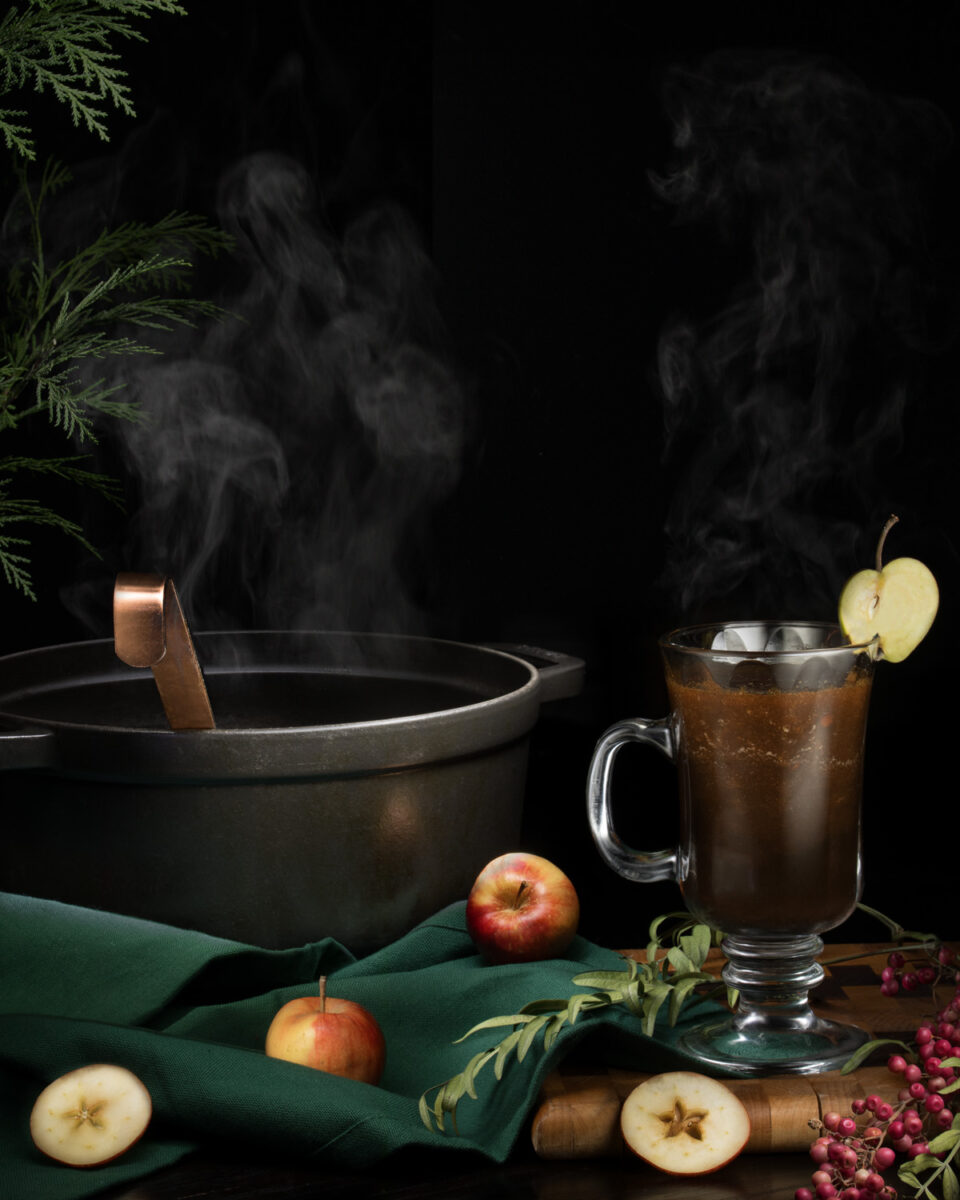As you watch the sun set on the shortest day, the last rays of coral light bounce off sinuous winter clouds and fill you with prickling energy. This is no ordinary night, no. The prevailing darkness does not mean rest tonight, for there is a job to be done. You buckle your boots and layer yourself in swaths of insulating hide, fur and wool while friends and siblings rummage for pots, pans, utensils, horns – anything really as long as it can stir enough of a clamoring racket to drive away the dark spirits. As you give a quick blow into a sheep’s bone flute to test it’s efficacy, your comrade approaches with the loving cup in outstretched hands. The murky contents of the wooden bowl slosh from side to side as you take it up, crab apples bobbing in hot ale like ships on a dark ocean. Intoxicating spices permeate your nose and throat before the liquid touches your lips. You drink deeply, knowing the warmth from this drink will keep the cold out better than any cloak. Tis the last longest night of the 16th century, and tonight we rouse the orchard trees so that they may bless us with another fine crop. Tonight, we go apple howling.
Marching torches pierce through the darkness, lighting up snow flurries like swarms of darting white moths, and the troupe has already begun their excited yipping and banging. The wassailing King and Queen, chosen by the crowd only moments before, lead the procession orchestrating familiar anthems echoed by the pack. You whistle dutifully along on your bone flute as the drink takes hold and loosens your lilting gait. We approach the orchard, full of apple trees. They stand in stark contrast to their luscious former selves, all spindly, knotted and naked. They look cold and sad. What they could use…is a drink.
Splishing and splashing, we pour out streams of steaming wassail onto the roots. We spritz the trunks by dipping and flicking, dipping and flicking. A drink for you, a drink for me, a drink for ye ole apple tree. Our Queen is hoisted on able shoulders so that she may dance among branches, tending to them by dunking toast into the wassail and then skewering those sops on a nearby limb. Strange ornaments they make, surely, but the spirits of the orchard seem to enjoy it. You serenade under the stars while a particularly boorish member of the congregation threatens a sapling with an axe. That’s no way to encourage growth, I believe, but to each their own. We approach the end of the orchard rows and alas, the Queen has run out of sops. The racket dies down momentarily and we gaze back upon our hard work, happy and drunk. The musketeers raise their barrels to the sky and pull the trigger. Three deafening cracks followed by three victorious hurrahs! The work is done, and it is on to the next orchard. We bow to the trees, and come next harvest they will show us their sweet thanks.
What is Wassailing?
Wassailing is the Yuletide and Christmastide tradition of gathering in a roving group to sing and drink from a communal bowl, to revel in positive energy and make merriment. There seem to be two distinct traditions that have merged over the years to create one practice.
Here we come a-wassailing
Among the leaves so green;
Here we come a-wand’ring
So fair to be seen…
…Our wassail cup is made
Of the rosemary tree,
And so is your beer
Of the best barley.
In medieval cider producing regions of England, celebrants would sing to the apple trees in hope for a good abundance of apple crops the following year. Known as “apple howling” They would bring with them noisemaking instruments and bowls of toast soaked in mulled beer and cider. As they passed through the orchards they would serenade the trees while adorning their bare branches with the soaked toast, pouring and splashing the wassail amongst the roots and limbs. Only later would the practice extend itself into feudal “luck visits” where celebrants would travel village to village, singing door to door to entertain the townsfolk. They would offer their music and hearty drinks from their wassail bowl and in return would be gifted with lovely sweets, small gifts and tokens. This tradition fused with a peasant practice on the Twelfth Night of Christmas similar to trick-or-treating, where the underclass of the town would enter the homes of lords, requesting food or drink in exchange for blessings and well wishes. Thus, the more modern practice of caroling was born.
We are not daily beggars
That beg from door to door,
But we’re the neighbours’ children,
That you have seen before…
…I have a little purse
It’s made of leather skin.
I need a silver sixpence,
To line it well within.
The term “Wassail” refers to a toast or cheers, derived from an ancient Anglo-Saxon phrase “Waes Hael” meaning “Be in good health”. The proper callback to the greeting is “Drinc Hael” meaning “Drink and be well!”. Geoffrey of Monmouth gives a telling for the origin of the phrase in his 1135 book “History of the Kings of Britain”
While Vortigern was being entertained at a royal banquet, the girl Renwein came out of an inner room carrying a golden goblet full of wine. She walked up to the King, curtsied low, and said “Lavert King, was hail!” When he saw the girl’s face, Vortigern was greatly struck by her beauty and was filled with desire for her. He asked his interpreter what it was that the girl had said and what he ought to reply to her. “She called you Lord King and did you honour by drinking your health. What you should reply is ‘drinc hail.’” Vortigern immediately said the words “drinc hail” and ordered Renwein to drink. Then he took the goblet from her hand, kissed her and drank in his turn. From that day to this, the tradition has endured in Britain that the one who drinks first at a banquet says “was hail” and he who drinks next says “drinc hail.”
British Food: A History
How do you make Wassail?
Though accounts of the origins of these traditions may vary, they are united by one thing…alcohol! The earliest wassails were hot mulled ales and meads, spiced with cloves, cinnamon, and nutmeg and spiked with sherry or brandy. This later evolved into a punch where fruit ciders or wine replaced ale and sugar was used as a sweetener. One of my favorite early versions of the drink was called “lambswool” which some believe to be an anglicized reference to the ancient Celtic apple festival “La Mas Ubhail”. Crab apples were dropped into the pot of mulled ale and would burst open, looking similar to fluffy wool atop the brew – another possible origin for the namesake.
Wassail! wassail! all over the town,
Our toast it is white and our ale it is brown;
Our bowl it is made of the white maple tree;
With the wassailing bowl, we’ll drink to thee.

My version of Lambswool includes a traditional English “real ale”, mulled with spices, sweetened with date syrup, whisked with baked apple purée and spiked with Oregon made apple brandy from Clear Creek distillery in Hood River. The result is a silky smooth malty beverage that is fit for the coldest of winter evenings. You can use any kind of brown ale for this recipe, but be sure it is very low IBU (I’m talking like 15-25 IBU). Bitter beers don’t play well with the spices and the sweetness. As well, the ale reduces as it cooks and the bitterness only intensifies. Date syrup makes an intoxicatingly complex sweetener that pairs beautifully with the roasted notes of the beer. Many lambswool recipes look quite unappetizing with chunks of apple floating at the top. Personally I’m not interested in slurping spiked applesauce, so I make sure to purée the apples thoroughly in my blender before whisking it into the pot. I hope you enjoy my take on this very old, very historically rich libation. Wassail!
Print
Wassailing Lambswool w/ Calvados & Date Syrup
- Yield: 4–5 Drinks 1x
Ingredients
- 18oz English brown ale
- 3 oz Calvados or apple brandy, plus more for serving
- 3 baking apples, peeled, cored and quartered
- 3 tbsp brown sugar
- 1/4c date syrup
- 4 cloves
- A pinch of fresh grated nutmeg
- 1 knob of ginger, cut in half
- 1 spent vanilla pod (optional)
Instructions
- Preheat the oven to 350F. Spread Apples out on a rimmed baking sheet or casserole dish and sprinkle Calvados over them. Cover with tinfoil and roast until tender and falling apart, 45-55 minutes.
- Meanwhile, combine Brown Ale, Brown Sugar, Date Syrup, Cloves, Nutmeg, Ginger, and Vanilla Pod in a heavy stockpot set over medium heat. Bring to just below a bare simmer, around 200F on an instant read thermometer. Cook for the rest of the time the apples are baking.
- Once apples have fully cooked, remove from oven and let cool. Transfer contents, including any juices to a blender and add about 1/2 cup of the mulled ale. Blend on high until fully emulsified, 2-3 minutes.
- Whisk apple purée into ale and mix completely. Strain entire mixture through a fine mesh sieve.
- Ladle into thick rimmed glasses and stir in 1.5oz Calvados for each drink. Garnish with an apple slice and serve.
Notes
Be sure to choose an ale with low IBU, no more than 30. Beers will increase in bitterness as it cooks down.

